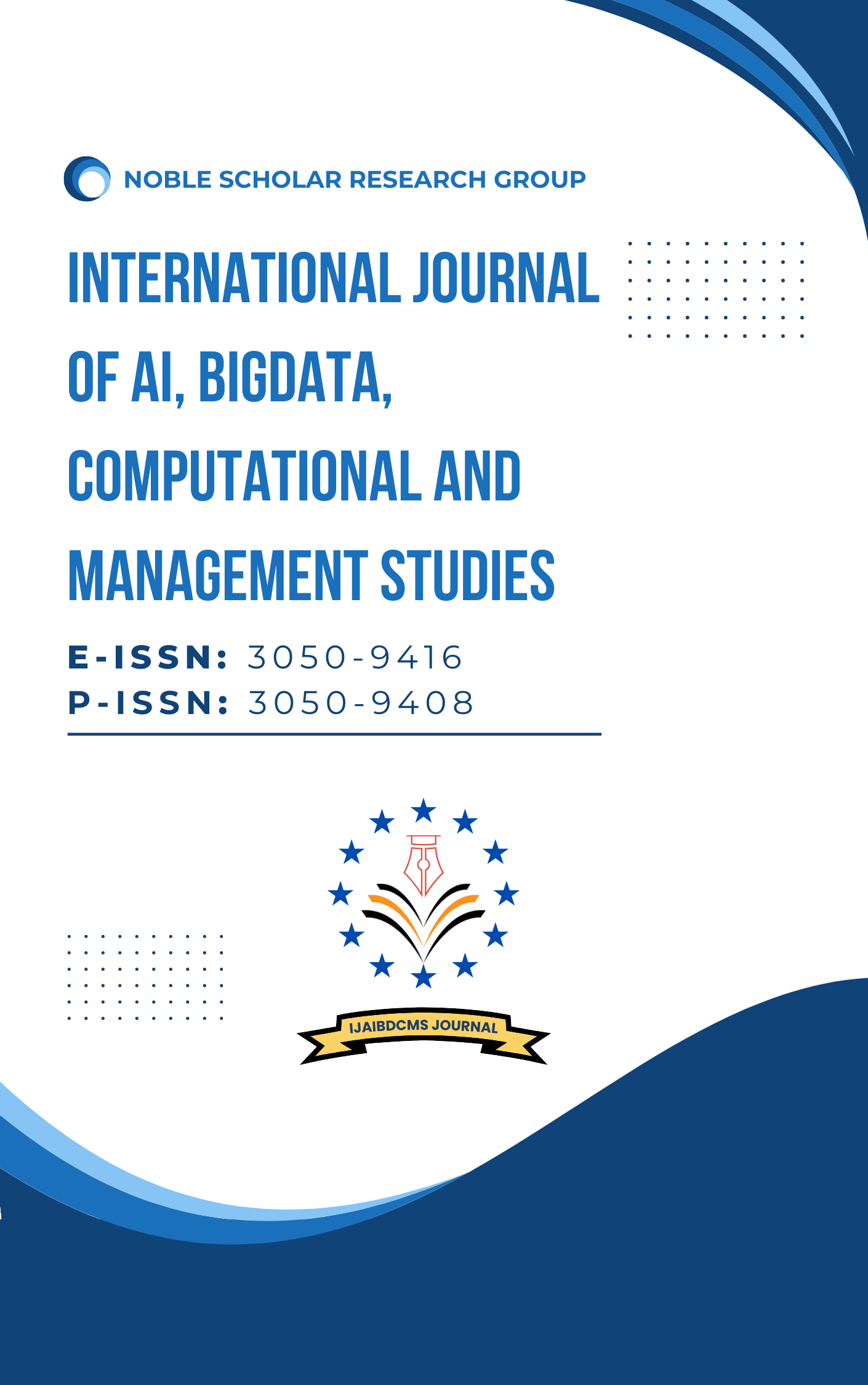AI-Driven Financial Risk Analytics in Multi-Cloud Environments: A Distributed Computing Perspective
DOI:
https://doi.org/10.63282/3050-9416.IJAIBDCMS-V4I4P102Keywords:
AI-driven analytics, financial risk management, multi-cloud environments, distributed computing, machine learning, natural language processingAbstract
The integration of AI-driven financial risk analytics within multi-cloud environments represents a significant advancement in the management of financial risks. By leveraging distributed computing, financial institutions can enhance their risk assessment capabilities, enabling them to process vast datasets efficiently and in real-time. AI technologies, such as machine learning and natural language processing, facilitate the analysis of both structured and unstructured data, allowing for more accurate predictions and timely responses to emerging risks. This capability is particularly crucial in today's fast-paced financial landscape, where traditional methods may falter under the pressure of large-scale data. Multi-cloud architectures offer flexibility and scalability, allowing organizations to optimize resource allocation and reduce operational risks associated with vendor lock-in. By utilizing multiple cloud providers, financial institutions can tailor their risk management strategies to meet specific regulatory requirements while also benefiting from diverse pricing models. Moreover, the deployment of AI algorithms across these platforms enhances the ability to detect anomalies and fraudulent activities, thereby safeguarding assets and maintaining compliance with evolving regulations. In summary, the combination of AI-driven analytics and multi-cloud environments not only transforms financial risk management but also empowers organizations to make informed decisions based on comprehensive data insights. This approach fosters a proactive stance towards risk mitigation, ultimately leading to improved financial stability and resilience
References
1. Kang, J., Xiong, Z., Niyato, D., et al. (2019). "Reliable federated learning for mobile edge networks." IEEE Wireless Communications, 27(2), 72-80.
2. Mao, Y., You, C., Zhang, J., et al. (2017). "A survey on mobile edge computing: The communication perspective." IEEE Communications Surveys & Tutorials, 19(4), 2322-2358.
3. Xu, X., Liu, C., & Zhang, L. (2020). "Artificial intelligence for edge service optimization in Internet of Things." IEEE Transactions on Network Science and Engineering, 7(4), 2842-2853.
4. Yu, W., Liang, F., He, X., et al. (2018). "A survey on the edge computing for the Internet of Things." IEEE Access, 6, 6900-6919.
5. Premsankar, G., Di Francesco, M., & Taleb, T. (2018). "Edge computing for the Internet of Things: A case study." IEEE Internet of Things Journal, 5(2), 1275-1284.
6. Zhang, C., Wang, F. Y., Wang, K., et al. (2019). "Edge intelligence: Paving the last mile of artificial intelligence with edge computing." Proceedings of the IEEE, 107(8), 1738-1762.
7. Rahman, M. A., Rahmani, A. M., & Liljeberg, P. (2020). "Energy-efficient edge intelligence for real-time industrial IoT applications." IEEE Transactions on Industrial Informatics, 16(7), 4523-4532.
8. Ren, J., Zhang, D., He, S., et al. (2019). "Edge computing for the industrial Internet of Things: Opportunities and challenges." Proceedings of the IEEE, 107(8), 1457-1486.
9. Wang, J., Ding, G., Wang, J., et al. (2019). "Deep learning for wireless physical layer: Opportunities and challenges." China Communications, 16(11), 92-111.
10. Taleb, T., Dutta, S., Mada, B., et al. (2021). "On multi-access edge computing: A survey of the emerging 5G network edge
architecture & orchestration." IEEE Communications Surveys & Tutorials, 23(1), 794-829.



